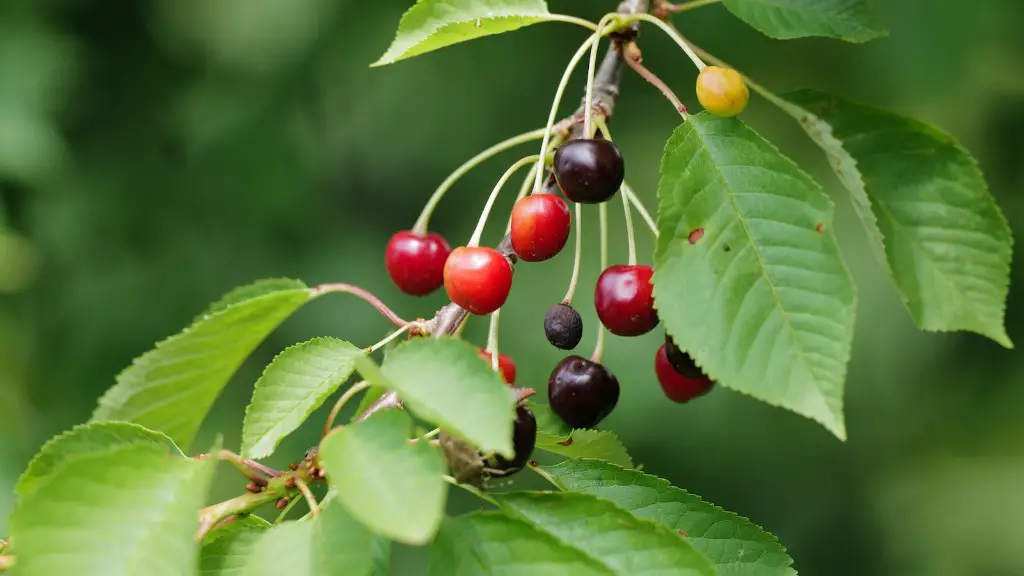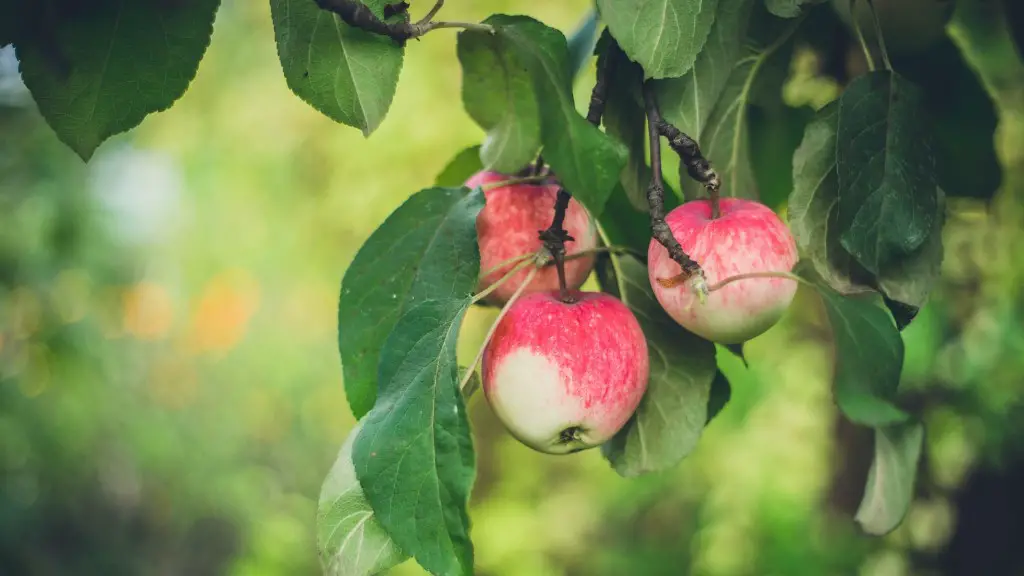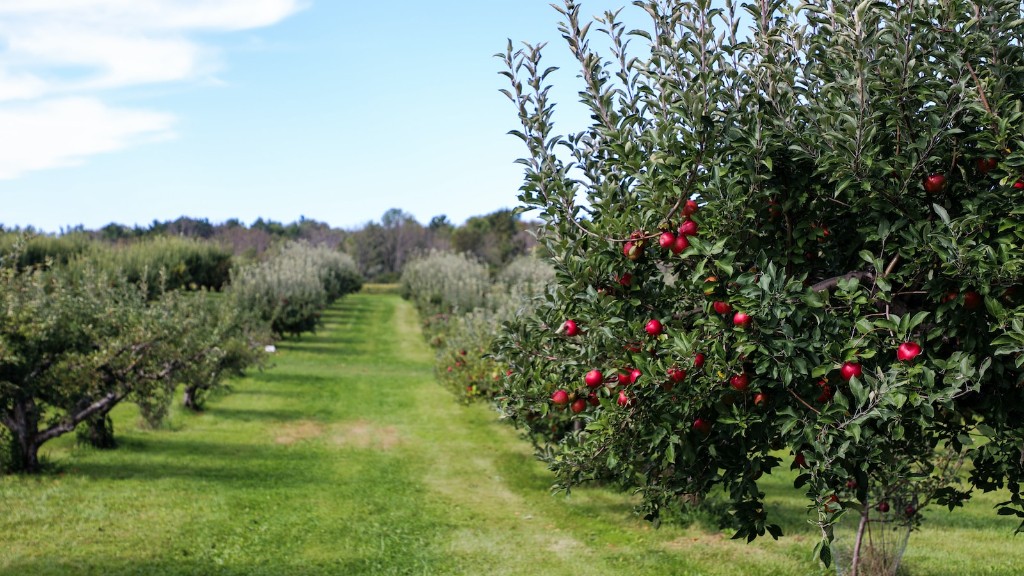The average life expectancy of a lemon tree may vary depending on the type of lemon tree and other environmental factors, such as weather and disease. Generally though, lemon trees can live for many years, often for up to 20 years or more. There are several factors that can modify a lemon tree’s life expectancy, such as climate, soil conditions, and overall health. Lemon trees do not have a predetermined age limit, but may die earlier due to environmental pressures or disease.
If cared for properly, a lemon tree can produce fruit for many years. To ensure that a lemon tree lives as long as possible, it is important to remember that a tree is a living being and needs to be cared for properly. This includes pruning, watering and fertilising the tree regularly, and making sure the soil is rich in organic matter. Mulching can also be important to retain moisture and protect the roots. A well-maintained lemon tree can last for decades.
An important factor in how long a lemon tree will last is the climate in which it is grown. Lemons like warm temperatures, so in colder climates they are unable to thrive and may not last as long as they would in more temperate areas. Some lemon trees may also need to be brought indoors when the weather gets too cold so they can survive until the weather turns warmer again.
Citrus tree diseases can also affect how long a lemon tree will last. Citrus canker, blight, or collar rot can all quickly kill a healthy tree, so it is important to inspect the tree regularly for any signs of disease. Treating any disease promptly can help ensure that the lemon tree lives for many years.
In summary, a lemon tree can live for many years, but proper care and attention are required to ensure that a lemon tree is healthy and able to live for as long as possible. Climate conditions, disease, and other factors all affect how long a lemon tree will last.
Pruning
Caring for a lemon tree includes pruning the tree to keep it in a healthy condition. Pruning is essential for lemon trees as it aids in their growth and enhances the shape of their branches. However, pruning should be done carefully to avoid damaging the tree. Pruning should be done after the tree has finished producing fruit and new buds form.
It is important to prune only healthy stems and branches, as they are less likely to suffer infection or damage. When pruning a tree, use sharp, clean pruning shears to avoid damaging the tree, and be sure to discard the clippings right away to prevent disease. Pruning helps maintain a lemon tree’s shape and size and increase its life expectancy.
In addition to pruning, a lemon tree should also be trained, or pruned systematically and regularly throughout the year. This helps keep the tree healthy and increases the chances of the lemon tree living for many more years. Accompanied by regular fertilisation, pruning is one of the most important maintenance tasks for a lemon tree to reach its full life expectancy.
Timely pruning and training are also important for the quality of the lemon fruits. Pruning reduces the number of fruits that the tree can bear and increases the size of each one. It is the only way to ensure that a lemon tree has the best chance at living a full life expectancy and producing the best quality fruits.
Watering
To keep a lemon tree healthy and happy, a consistent water supply is essential. Lemon trees should be watered around every other day, especially during the hot and dry months of the year. The tree should be watered until the soil is moist and the roots are watered sufficiently. Overwatering can cause the roots to rot, while underwatering can cause the roots to become dry and the leaves to curl up.
It is important not to water the leaves of a lemon tree as this can cause fungal diseases. If the leaves get wet, they should be allowed to dry before sunset to prevent diseases. It is also important to check the moisture content of the soil before watering, as this can help ensure that the tree is not over or underwatering.
Every few months, a lemon tree should be deeply watered to ensure that the roots can receive the moisture they need. This can be done by turning a hose on low and slowly watering the entire tree for a couple of hours. Deep watering helps ensure that a lemon tree lives for many years and produces healthy, sweet-tasting lemons.
In summary, a lemon tree requires consistent watering, in order to have the best chance at living for a long time. Over- and underwatering can cause significant damage to the tree, while deep watering every few months will help promote healthy root growth and development.
Fertilising
Fertilising a lemon tree is a key part of caring for it and also helps extend its lifespan. To fertilise a lemon tree, it is important to use a balanced citrus tree fertiliser that is specially formulated for citrus trees. This type of fertiliser should be applied once every three months, starting in early spring and ending in late autumn.
Before fertilising, it is important to check the soil’s pH level in order to ensure it is at the optimal level for the lemon tree. If the pH is too low, the lemon tree will not be able to absorb the nutrients in the fertiliser. To raise the pH level of the soil, it may be necessary to add lime to the area near the tree.
When fertilising the tree, spread the fertiliser around the entire base of the tree, making sure it is evenly distributed. After fertilising, water the tree for a few minutes to help the fertiliser reach the roots. This should be done every three months to ensure that the lemon tree has an adequate supply of nutrients to thrive.
In summary, fertilising a lemon tree correctly and on a regular basis can help extend its life and promote healthy growth. The type of fertiliser and how often to fertilise will depend on the type of lemon tree, so it is important to read the instructions carefully and follow them accordingly.
Disease Prevention
Lemon trees are vulnerable to certain diseases, with the most common being citrus canker and citrus blight. Both of these diseases can cause significant damage to a lemon tree and even kill it quickly, if not treated properly. Therefore, it is important to inspect a lemon tree regularly for signs of disease.
If any signs of disease are present, such as wilting or yellowing leaves or spots on the leaves, it is important to treat the tree immediately. To treat the tree, it is important to use an approved citrus tree fungicide. This should be done according to the manufacturer’s instructions.
In order to prevent diseases from infecting a lemon tree in the first place, it is important to keep the tree’s environment clean and free of debris. Any dead foliage or leaves should be removed from the area around the tree in order to reduce the risk of disease. In addition, a lemon tree should only be watered at the base, in order to prevent any fungal growth from occurring on the leaves.
In summary, diseases can kill a lemon tree quickly, so it is important to be alert for any signs of disease and treat it swiftly. Preventative measures, such as cleaning the tree’s environment and avoiding wetting the leaves, can also help keep a lemon tree disease-free and increase its lifespan.
Pests
In addition to diseases, lemon trees can also be prone to pests. Most common citrus pests include aphids, whiteflies, scale and mites. All of these pests can affect the health and lifespan of a lemon tree, so it is important to check for signs of pests regularly. Signs of pests may include wilting or yellowed leaves, stunted growth, and blackened fruit.
If any signs of pests are present, it is important to treat the tree immediately. To treat the tree, it is important to use an approved lemon-tree pest treatment, following the manufacturer’s instructions. Pest treatments are generally available as a spray or powder, and should be applied according to the instructions.
In order to prevent pests from infesting a lemon tree in the first place, it is important to ensure the tree’s environment is clean and free of debris. Any dead foliage or leaves should be removed from the area around the tree to reduce the risk of pests. In addition, a lemon tree should be sprayed with an organic pesticide every few months, to help repel any pests that may be present in the area.
In summary, pests can damage a lemon tree and reduce its lifespan, so it is important to inspect it regularly for any signs of pests. Preventative measures, such as maintaining a clean environment and spraying the tree with organic pest treatments, can help keep a lemon tree pest-free and extend its life.





